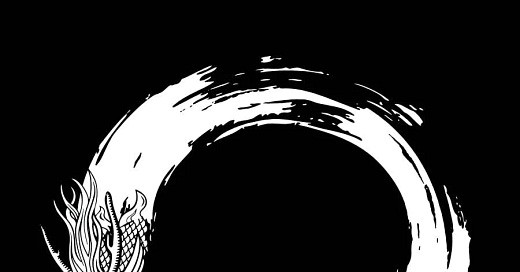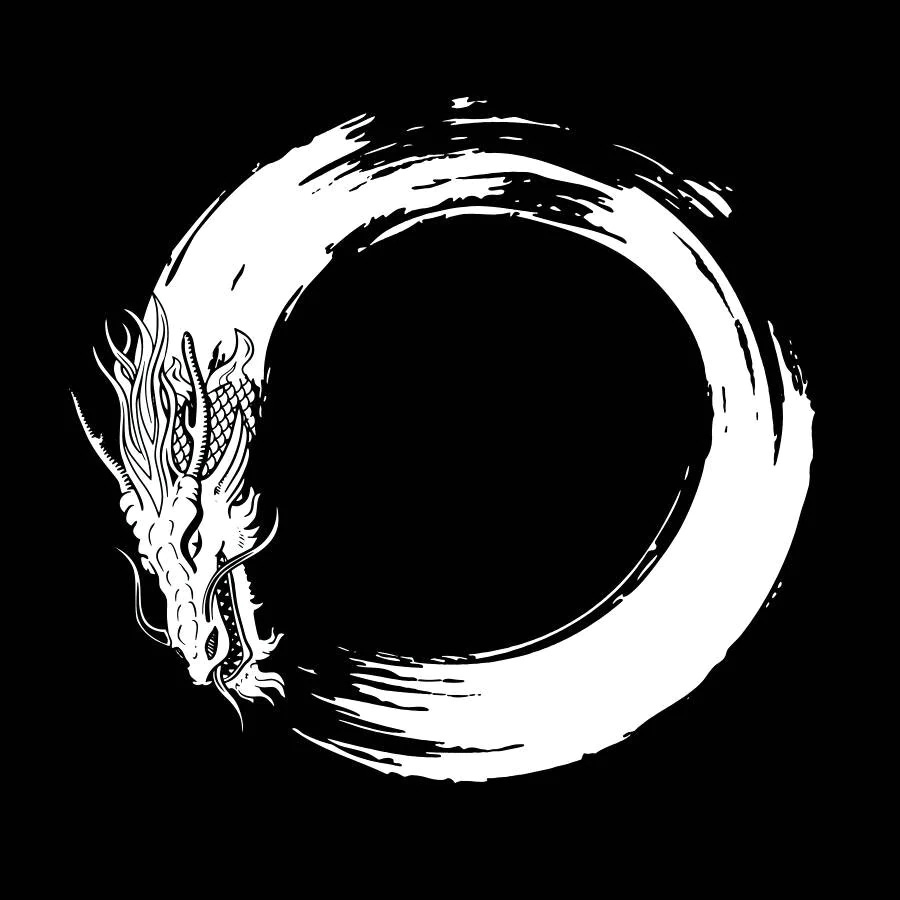The Sixth Ancestor [saw] the monastery flag flapping and two monks with opposite opinions. One said, “The flag moves.” One said, “The wind moves.” The monks argued back and forth without agreeing to the truth. The Ancestor said, “Wind is not moving. Flag is not moving. Gentlemen, mind is moving.” The monks were terrified.—Case 29, The Gateless Gate
More than a century after the Sixth Ancestor confounded these monks’ minds, the Zen Master Miaoxin (ca. 880) awakens 17 monks by adroitly wielding Manjushri’s sword. These monks had traveled to visit her teacher Yangshan Huiji, but they arrived too late to climb the mountain, so they spent the night in the temple guest house where Miaoxin was the director. That evening they discussed the Sixth Ancestor's koan. They were all off the mark.
Miaoxin overheard the monks' debating and said to her attendant: “What a shame that these 17 blind donkeys have worn out so many pairs of straw sandals on their pilgrimage and cannot even dream about the Buddha Dharma!”
Her attendant told the monks what Miaoxin said. Instead of being upset with Miaoxin’s comment, the monks were ashamed of their inability to penetrate the koan. Since they were sincere practitioners of The Way, they did not dismiss Miaoxin's criticism as the impertinence of a woman. Instead they dressed formally, offered incense, bowed, and requested her teaching.
She said, “Please come closer,” but before they could, she shouted: "The wind is not moving. The flag is not moving. The mind is not moving." All 17 monks immediately awakened and they became Miaoxin's students. They returned home without ever climbing the mountain to meet Yangshan.
Dogen recounts this story in his fascicle “Receiving the Marrow by Bowing,” which he wrote in 1240. He uses this story to extol women—householders as well as nuns—who have attained the “True Dharma Eye.” Dogen unequivocally states that true practitioners of The Way should bow to a person who has attained the marrow, regardless of the sex of the teacher:
“Why are men special? Emptiness is emptiness. Four great elements are four great elements. Five skandhas are five skandhas. Women are just like that. Both men and women attain the way. You should honor the attainment of the way. Do not discriminate between men and women. This is the most wondrous principle of the buddha way.”1
I confess (Catholic-karmic residue!) that I had never read this Dogen fascicle until last year. It was a joy to hear Dogen herald women teachers as equals and ground his view in the emptiness teachings of the Buddha. In her invaluable book, Zen Women, Dharma teacher Grace Schireson says,
“Dogen portrayed a woman embodying the Zen master’s role who gained recognition by teaching in a way that enlightened monks. Not only was the teacher Miaoxin masterful, but the inquiring monks were not caught in dualistic judgments about whether to invite a woman to teach them.”2
In the original koan, Hui-neng woke up two monks whose minds were stuck in delusive thinking. Now 150 years later, we have 17 monks with 17 points of view about the flag, and wind, and added to this, the Sixth Ancestor’s teaching about “mind moving.” These monks are caught in dualistic thinking by debating a teaching that occurred more than a century before they set out on their pilgrimage. The monks’ minds are so outwardly focused on “external” sensory objects that they are blind to the direct embodied experience of their present reality. Ironically, they are arguing about the Grandmaster's teaching without realizing that they do not understand the Sixth Ancestor’s teaching.
Both Hui-Neng and Miaoxin are pointing to that which is immutable, and yet animates flag, wind, and mind: that which has no boundaries, no perspectives, and continues without a trace. Although both teachers point to the absolute, Miaoxin slices deeper by undermining the concept of “mind moving.” She stops the monks in their tracks as they move closer to hear her teaching of non-duality:
There is no wind, no flag, no mind. Wake up to NOW! Nothing is hidden. Liberation is possible each moment.
Both Hui-Neng and Miaoxin emphasize direct experience into the nature of mind, which of course is the nature of flag and wind too. In Zen speak, this direct insight is called kensho: in Japanese, “ken” means “seeing” and “sho” means “nature” or “essence.” Kensho is experiencing (embodying) the nature or essence (the marrow) of the Absolute.
“Some refuse to bow to female teachers who have received dharma transmission. Because these people lack knowledge and study, they are close to animals and far from buddha ancestors.”—Eihei Dogen, “Receiving the Marrow by Bowing” (J., Raihaitokuzu)
Miaoxin also shocks the monks out of grasping onto someone else’s direct insight—even if it is that of a revered Zen ancestor. She exhorts them to stop clinging to the inverted views of the past and investigate what’s arising NOW. Drop the abstract and sink below intellectualization: smell the fragrant wind, feel the breeze on the skin, hear the flag fluttering, taste the Unconditioned.
For me, the relevancy of their ancient teaching is that when we embody the “exquisite peal of emptiness” this dissolves the barriers in our heart-minds. It slices through my fixed views and reminds me to investigate whether my perceptions are either causing suffering and distress or liberation and ease for myself and others. We cannot open our hearts-minds-bodies to the immediacy of now if we’re caught up in defending our beliefs and identities.
Arguing about whether a flag is moving or the wind is moving is perhaps a trivial matter; however, this fundamental proclivity of mind to proliferate leads to harm when there's a strong sense of self identified with a point of view. Are my perceptions coming from a sense of unity or from division? Am I blindly believing in something or am “I” actualizing the fundamental point?
“Flag-wind-mind flap & flutter; True Dragon’s breath stills them all.”
Dogen, Eihei. Treasury of the True Dharma Eye. edited by Kazuaki Tanahashi. Boston & London, Shambhala Publications, 2012.
Schireson, Grace. Zen Women: Beyond Tea Ladies, Iron Maidens, and Macho Masters. Somerville, MA. Wisdom Publications, 2009.





Beautifully explained, Heather. Thank you.
Thank you for this teaching. You may disagree but you are an example of a modern day Miaoxin.